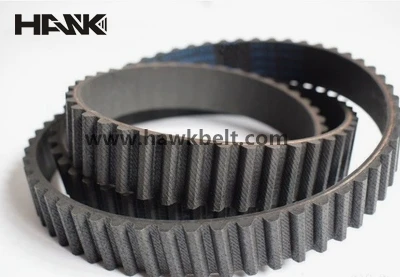- Arabic
- French
- Russian
- Spanish
- Portuguese
- Turkish
- Armenian
- English
- Albanian
- Amharic
- Azerbaijani
- Basque
- Belarusian
- Bengali
- Bosnian
- Bulgarian
- Catalan
- Cebuano
- Corsican
- Croatian
- Czech
- Danish
- Dutch
- Afrikaans
- Esperanto
- Estonian
- Finnish
- Frisian
- Galician
- Georgian
- German
- Greek
- Gujarati
- Haitian Creole
- hausa
- hawaiian
- Hebrew
- Hindi
- Miao
- Hungarian
- Icelandic
- igbo
- Indonesian
- irish
- Italian
- Japanese
- Javanese
- Kannada
- kazakh
- Khmer
- Rwandese
- Korean
- Kurdish
- Kyrgyz
- Lao
- Latin
- Latvian
- Lithuanian
- Luxembourgish
- Macedonian
- Malgashi
- Malay
- Malayalam
- Maltese
- Maori
- Marathi
- Mongolian
- Myanmar
- Nepali
- Norwegian
- Norwegian
- Occitan
- Pashto
- Persian
- Polish
- Punjabi
- Romanian
- Samoan
- Scottish Gaelic
- Serbian
- Sesotho
- Shona
- Sindhi
- Sinhala
- Slovak
- Slovenian
- Somali
- Sundanese
- Swahili
- Swedish
- Tagalog
- Tajik
- Tamil
- Tatar
- Telugu
- Thai
- Turkmen
- Ukrainian
- Urdu
- Uighur
- Uzbek
- Vietnamese
- Welsh
- Bantu
- Yiddish
- Yoruba
- Zulu
Dec . 11, 2024 11:51 Back to list
camshaft drive toothed belt
Understanding Camshaft Drive Toothed Belts An Essential Component in Engine Performance
The efficiency and performance of an automobile's engine hinge significantly on its mechanical components, with the camshaft drive toothed belt being among the most crucial. This seemingly simple part plays a critical role in synchronizing the function of various engine components, directly influencing overall engine performance, fuel efficiency, and longevity.
What is a Camshaft Drive Toothed Belt?
A camshaft drive toothed belt, commonly referred to as a timing belt, is a rubber belt with teeth that connects the crankshaft to the camshaft in an internal combustion engine. This interconnection is crucial because it ensures that the engine’s valves open and close at the appropriate times during the engine cycle, which is essential for optimal performance. The precise timing of these movements is vital to the engine's operation, preventing potential damage that could occur from misalignment.
Importance of the Timing Belt
The primary function of the camshaft drive toothed belt is to maintain synchronization between the crankshaft and the camshaft. The crankshaft converts the linear motion of the pistons into rotational motion, while the camshaft is responsible for opening and closing the engine’s valves. If these components operate out of sync due to a worn or broken belt, catastrophic engine failure may occur, resulting in expensive repairs.
Regular maintenance of the toothed belt is, therefore, crucial. Most manufacturers recommend replacing the timing belt every 60,000 to 100,000 miles, depending on the vehicle's make and model. Neglecting to replace a worn-out belt can lead to severe consequences, including valve damage and a costly engine rebuild.
camshaft drive toothed belt

Advantages of Using Toothed Belts
One of the key advantages of toothed belts over other timing mechanisms, such as chains, is their weight and noise characteristics. Toothed belts are generally quieter in operation, contributing to a more pleasant driving experience. They are also lighter, which can improve fuel efficiency. Additionally, belts can be manufactured in various sizes and shapes, making them adaptable to different engine designs.
Another advantage is the reduced maintenance needs—timing belts do not require lubrication like chains, which can be a significant factor in overall maintenance costs. This feature also contributes to a cleaner engine environment, reducing the likelihood of oil leaks.
Signs of a Failing Toothed Belt
Awareness of the signs of a failing timing belt can save drivers from facing a sudden breakdown. Common indicators include a high-pitched whining noise from the engine, visible wear or cracking on the belt itself, or engine misfiring. Additionally, if the vehicle experiences issues with starting or the engine runs rough, these may also point to timing belt problems.
Conclusion
In conclusion, the camshaft drive toothed belt is a vital component of modern internal combustion engines, playing an essential role in maintaining the smooth operation of the engine. Regular maintenance and timely replacement of this component can prevent potential engine failures, ensuring that the vehicle runs efficiently and effectively. For any car owner, understanding the importance of the timing belt, along with its maintenance requirements, can lead to enhanced vehicle performance and longevity. Thus, it's not merely a belt; it is, in fact, the efficient lifeline of your engine, harmonizing the dance of pistons and valves while ensuring an enjoyable driving experience.
-
Korean Auto Parts Timing Belt 24312-37500 For Hyundai/Kia
NewsMar.07,2025
-
7PK2300 90916-T2024 RIBBED BELT POLY V BELT PK BELT
NewsMar.07,2025
-
Chinese Auto Belt Factory 310-2M-22 For BMW/Mercedes-Benz
NewsMar.07,2025
-
Chinese Auto Belt Factory 310-2M-22 For BMW/Mercedes-Benz
NewsMar.07,2025
-
90916-02660 PK Belt 6PK1680 For Toyota
NewsMar.07,2025
-
drive belt serpentine belt
NewsMar.07,2025

